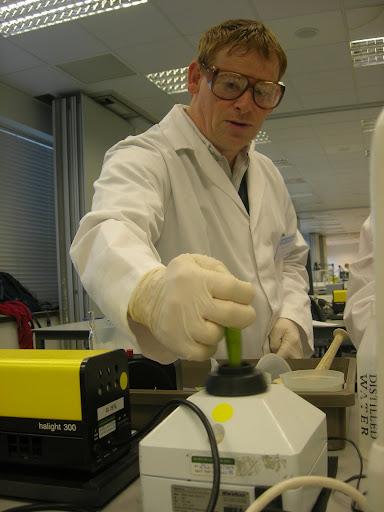Book 10 - the last real book. There is a Book 11, but its more of a pamphlet and discusses how to write essays and make presentations and stuff like that.
Anyway, Book 10 is all back to organics and synthesis.
First there is a whole section on carbonyl compounds and reactions - those things with a C=O in them somewhere. I guess you either like this sort of stuff, or not. I'm rather less than impressed with it all, although the rules seems straight forward there seem to be a lot of them.
Then the next section is all about organometallic reactions. Grignard reagents. Despite not really knowing how these are made, they seem awfully useful for glueing bits of molecules together.
It starts with magnesium compounds, then we move through into sodium, lithium and copper compounds. Then it finishes up with organoboron.
Section 3 looks at radical reactions - where you get compounds with single electrons lieing around. These use to be so rapid and violent to be unusable, but recent times they have found ways of taming them to make a useful way of doing things.
Section 4 is about retrosynthesis mostly. So knowing what you want to make, how can you work backwards to find a way to make it from everyday molecules. Basically there is no right way or wrong way, but some rules help you to break up compounds to make it easier. It seems a combination of science, experience and a touch of art.
The last section looks at biosynthesis, which rather puts chemist in the shade. Making complex molecules at room temperature and pressure without breaking a sweat.
Finally, there is a case study on polymers.
Phew - all done - finally got to the end of what has been a long course squeezed into what seems too short a time!
skip to main |
skip to sidebar

Life studying for a 2nd time around with the Open University and others.
My Latest Blip
About Me
Topics
- A251 (7)
- astronomy (1)
- CMA (4)
- coursera (8)
- courses (40)
- degree (1)
- ECA (2)
- exam (7)
- experiment (3)
- G+C (7)
- html (1)
- intro (1)
- java (1)
- quantum mechanics (1)
- residential (43)
- S103 (19)
- S170 (1)
- S171 (1)
- S193 (1)
- S194 (4)
- S196 (1)
- S204 (21)
- s205 (18)
- S282 (17)
- s283 (8)
- S320 (12)
- S366 (11)
- S377 (10)
- SD329 (9)
- sk195 (2)
- sxr103 (3)
- SXR208 (9)
- sxr270 (7)
- sxr270tutor (7)
- SXR375 (9)
- SXR376 (8)
- TMA (49)
- tutorial (4)
- udemy (3)




No comments:
Post a Comment